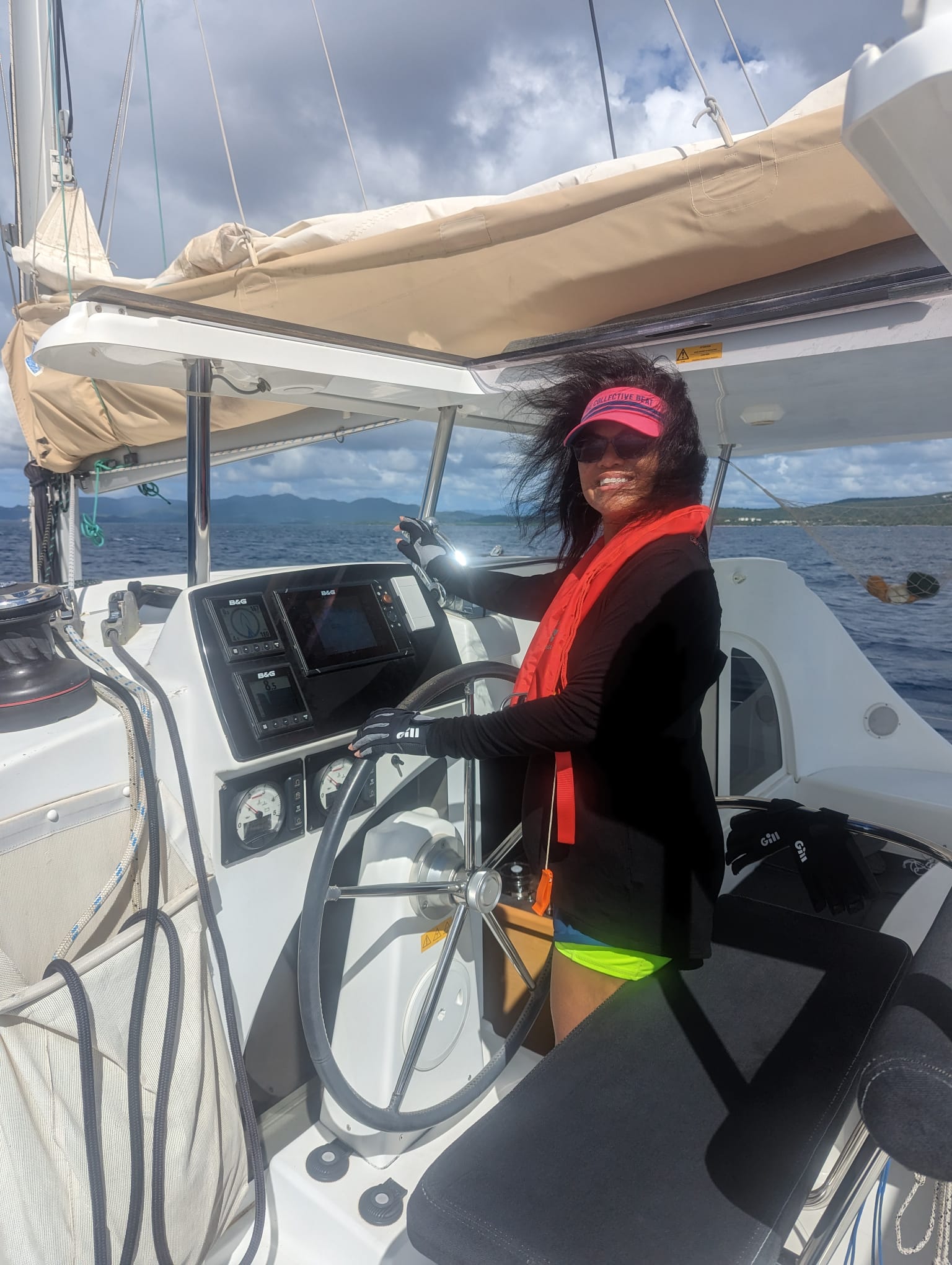Sun’s out. It’s perfect sailing weather. The wind is blowing 15-20 knots. Your deck shoes are laced, and your Helly Hansen hat shades a sun-kissed face. You want to hop on deck, but you hesitate, “…Am I going to get seasick again?”.
Do you want to enjoy sailing but dread the nausea each time you leave the dock? Or, are you fine most of the time on the water, but get seasick during storms and rough seas? That was me. I have always been sensitive to motion sickness whether on land or sea.
Luckily, after three years sailing the Caribbean and Pacific; and nearly 10,000 nautical miles later, I am still sailing. How do I do it? I am more in tune with what causes motion sickness and how to battle it. Here is a guide of 6 sea-sickness remedies so you can choose the best option for you.
What Causes Sea Sickness?
10% of us are extra sensitive to motion. Sea sickness is caused by a disconnect between your brain and your body. Your eyes may see one thing while your body experiences another. That’s why you cannot read a book while the boat is bashing into waves, or concentrate on a task while the deck heaves up and down in confused seas. Feeling seasick can be a minor annoyance or it can prevent you from being a useful crew member onboard. The best way to manage symptoms is to prevent them from occurring.
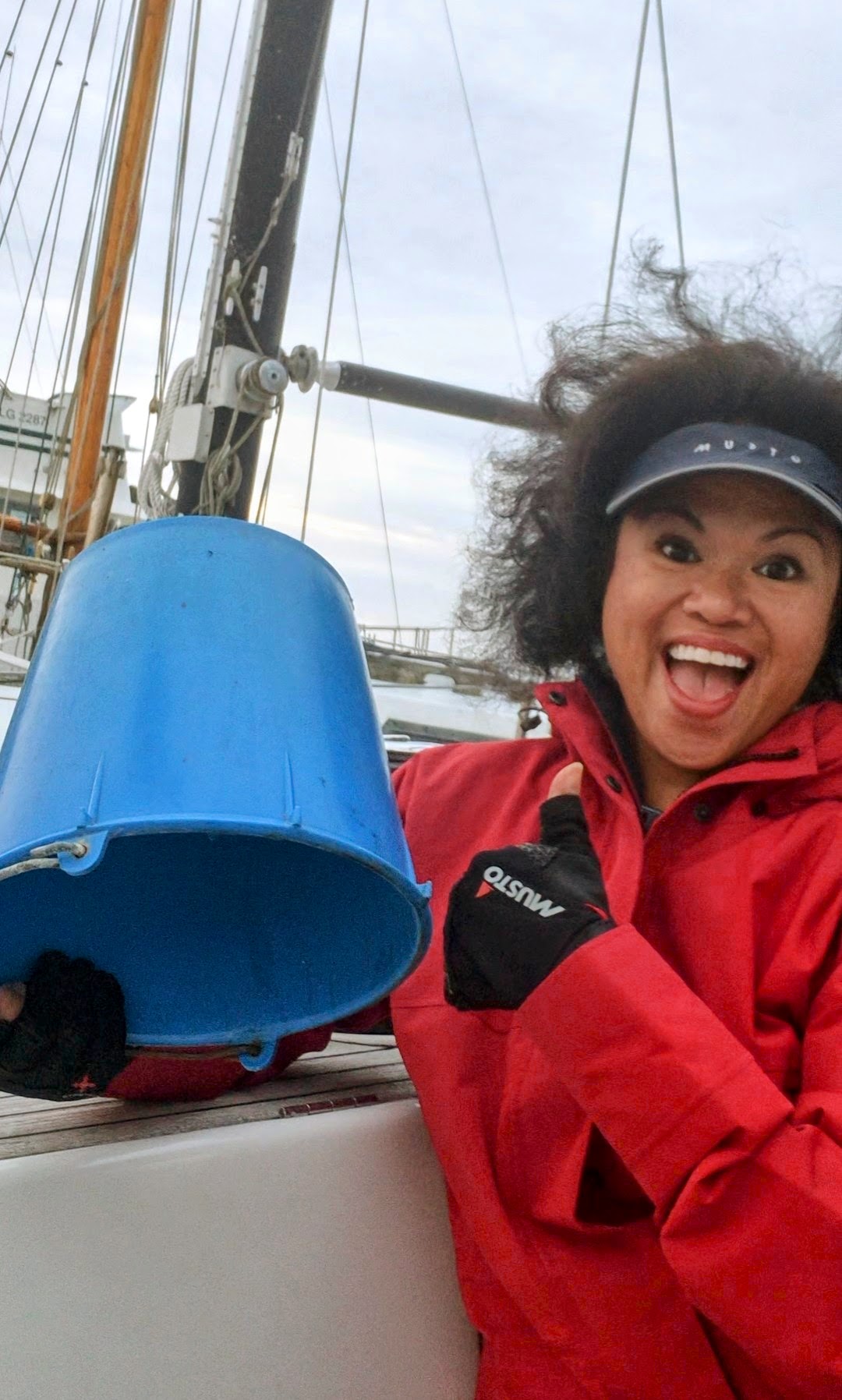
My Experience
What worked for me? This is what I used for a 30+ day Pacific crossing: initially taking the Scolopamine patch, followed by Nausicalm over-the-counter tablets, and finally, an anti-nausea wristband to completely cure me of sea-sickness. While one option may work for you, a combination approach worked for me.
Quick Fixes
I giggle when I recall past advice on battling sea-sickness. Some of these tips work. But sometimes the body betrays you, no matter what you try.
- Always ride where your eyes will see the same motion that your body and inner ears feel. If you are on a boat you can go up on the deck and watch the motion of the horizon. This only works if you are a passenger, not if you are actively doing sailing maneuvers, or working below deck.
- Do not read while traveling if you are subject to motion sickness, and do not sit in a seat facing backward. I need to read charts for navigation, recipes while in the galley cooking…NOT reading is not an option for many sailors.
- Do not watch or talk to other travelers. Ha! You need to be able to communicate while you are sailing: “Ease the sheet out”, “Prepare to gybe”, “Maybe that fourth Rum Punch was a bad idea”, “I’m gonna be sick”, “It’s my turn on watch already?”
- Eating light and easily digested foods like crackers can help manage symptoms. I would eat Sleeves of saltine crackers and then have salty, cracker paste vomit. But, agreed, this sentiment is a wise one.
Several medications and treatments are effective in managing motion sickness. Some of these include: over-the-counter medication, prescription drugs, and acupressure, acu-stimulation wristbands. I have rated remedies I tried on a scale 1 to 10, with 10 being the most effective for me.
6 Remedies to battle seasickness:
Scopolamine (Prescription Medication)
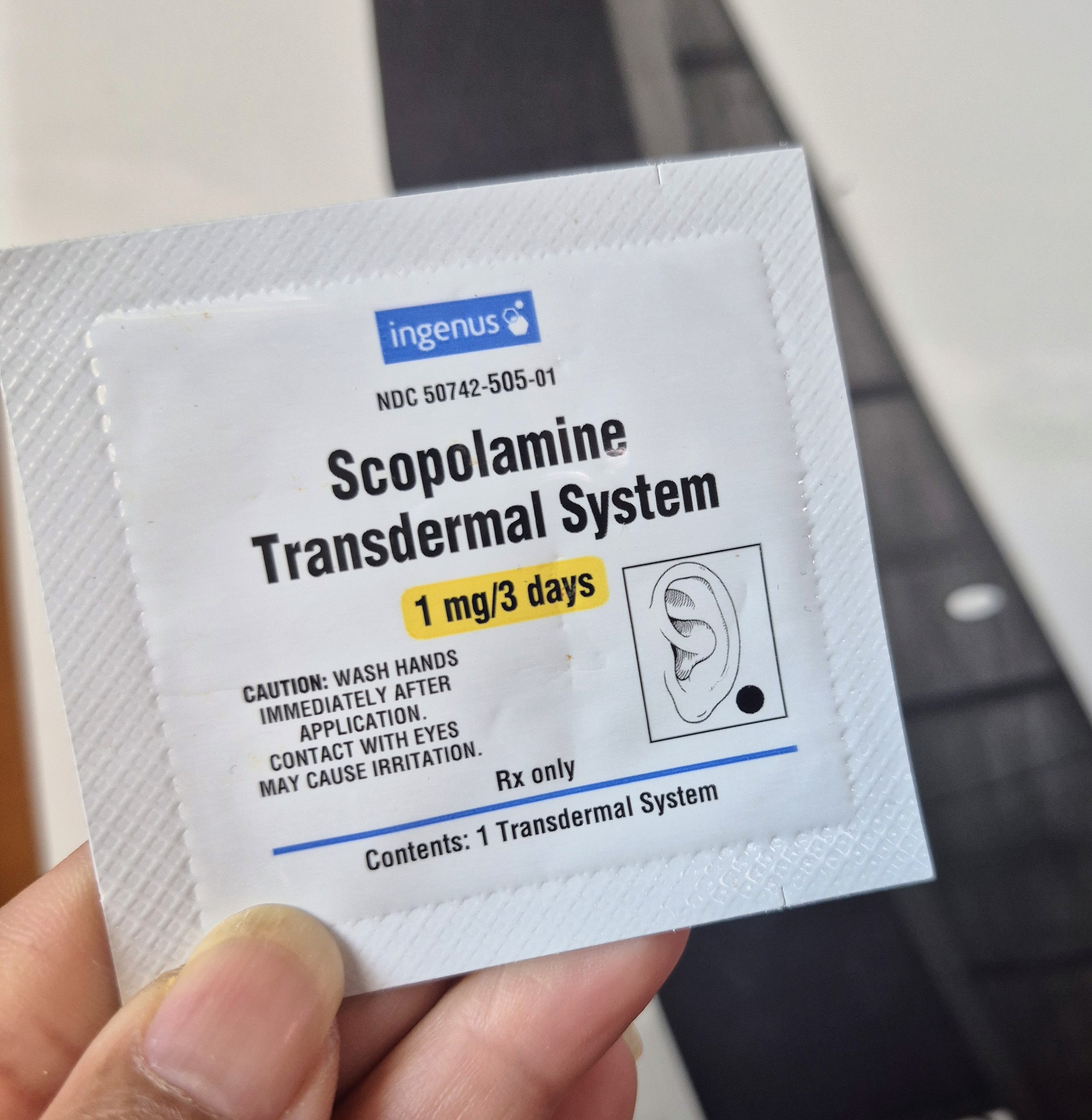
Prescription Scolopamine is either an oral tablet or patch worn behind the ear. I have found the Nickle-sized patches are easy to wear and last about three days. For some, sea-sickness symptoms may go away after the initial couple of days. If you need to take Scolopamine longer, it can get expensive and you may get reliant on drug intervention instead of letting your body acclimate to sea conditions. The main side effect of scopolamine is dry mouth.
Rating 7/10 for effectiveness but it is not a long-term solution.
Buy online: Motion Sickness Patches
Dramamine Oral Tablet (Dimenhydrinate)
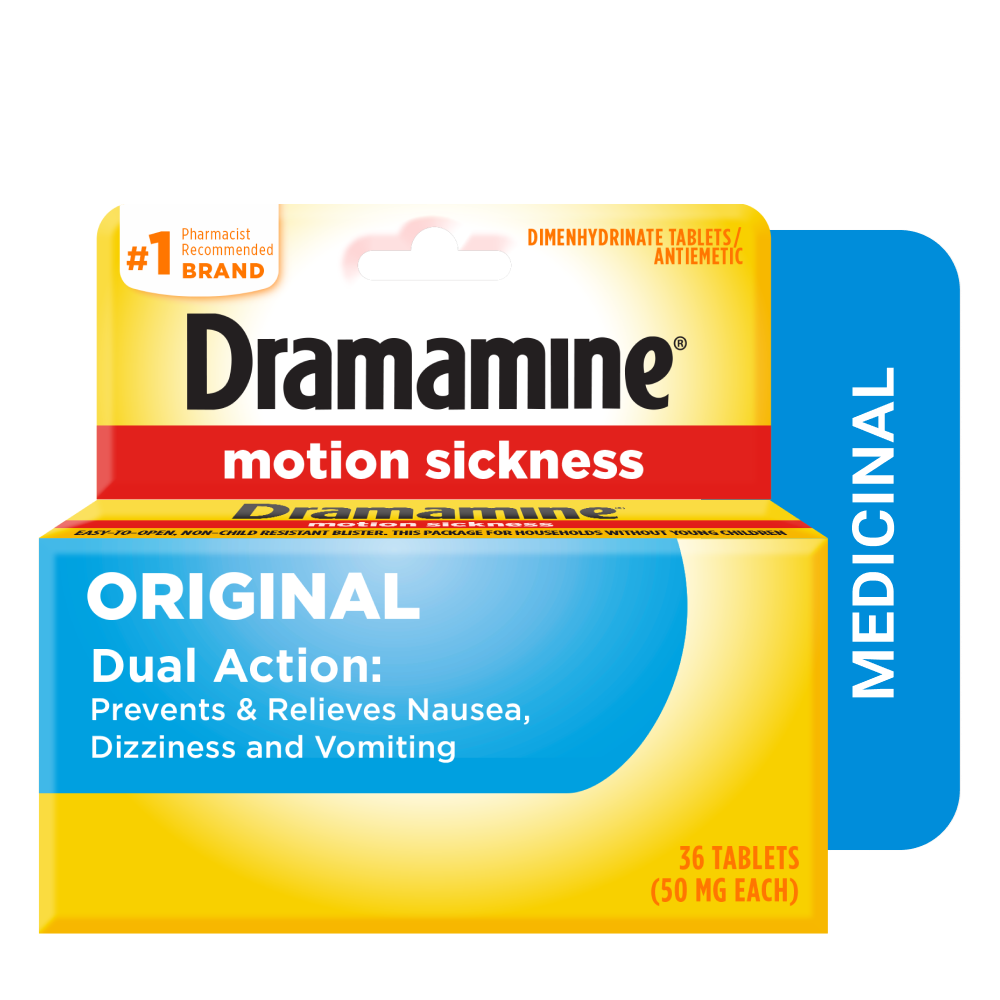
Dimenhydrinate (Dramamine. Or maybe Drama Queen :) is for use in adults and children at least 2 years old to treat or prevent nausea, vomiting and dizziness caused by motion sickness. This is the easiest to access (non-prescription) and most popular aid used for sea-sickness. The main side effect is drowsiness. Take Dramamine 30 to 60 minutes before sailing, and every four hours until symptoms go away.
Rating: 6/10 as it is effective but drowsy and compromises my alertness onboard.
Available in UK, branded as Kwells. Buy online
Nausicalm Oral Tablet (Cyclizine)
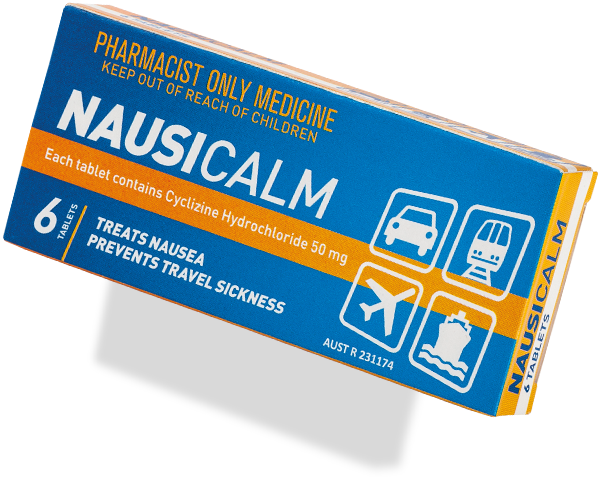
Cyclizine is another over the counter, non-prescription remedy. Brand names are Marezine, Valoid, Nausicalm. Personally, I love that name - Nausicalm - “calming the fever chills of nausea away with one small, chewable dose”. An added benefit is it reduces the body’s response to histamine,so it helps with allergies. This option is very similar to Dramamine, but didn’t make me drowsy and lasts up to eight hours - twice as long as Dramamine.
Rating: 8/10 as it lasts longer with fewer side effects than other oral drugs.
Sea Band (Accupressure Wearable)
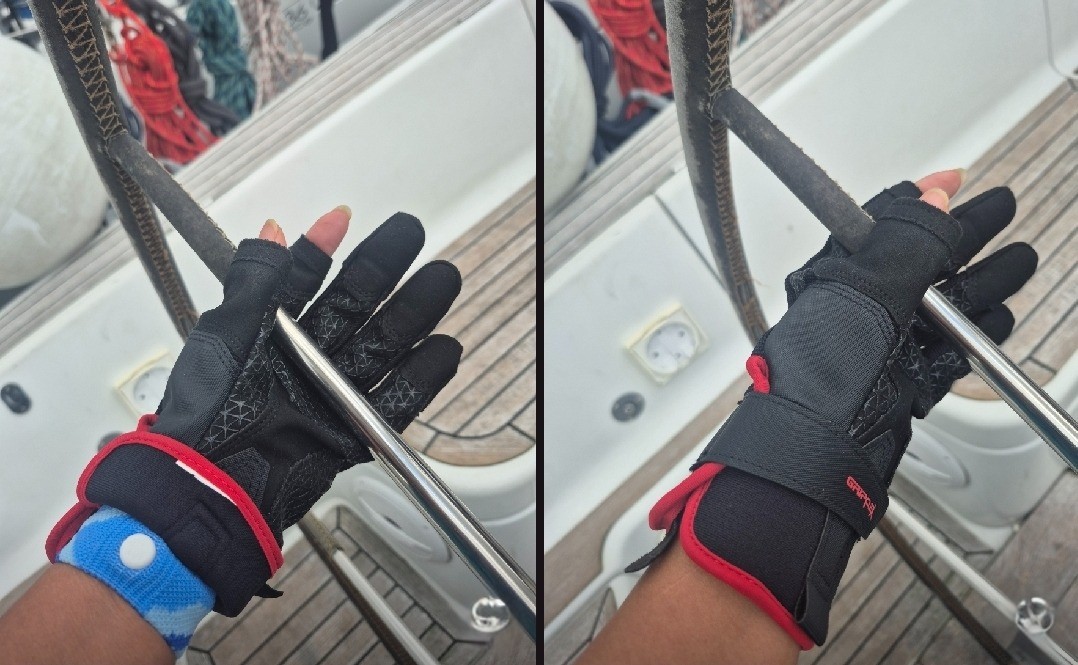
This stretchable band has a plastic raised dot stitched on the inside and the dot’s pressure on the wrist can provide relief. The wrist acupoint that is pressed is the Nie-Guan point, pericardium 6, or more easily, P6. You can find it two fingers down from the crease where your palm ends and your arm begins. Stimulating this wrist point sends a signal to your brain to relieve nausea symptoms. Funny enough, there are other points in and on your body that can be pressed to stop nausea: the bladder, spleen, and stomach. BUT, putting a huge body band on these spots isn’t as easy or marketable as a tiny wrist band. Bonus, the stretchy band is low-profile and fits easily under sailing gloves if you want to hide your queasy disposition.
Rating: 7/10 for effectiveness but slightly dorky look.
Buy online: Motion Sickness Bands
Relief Band Device
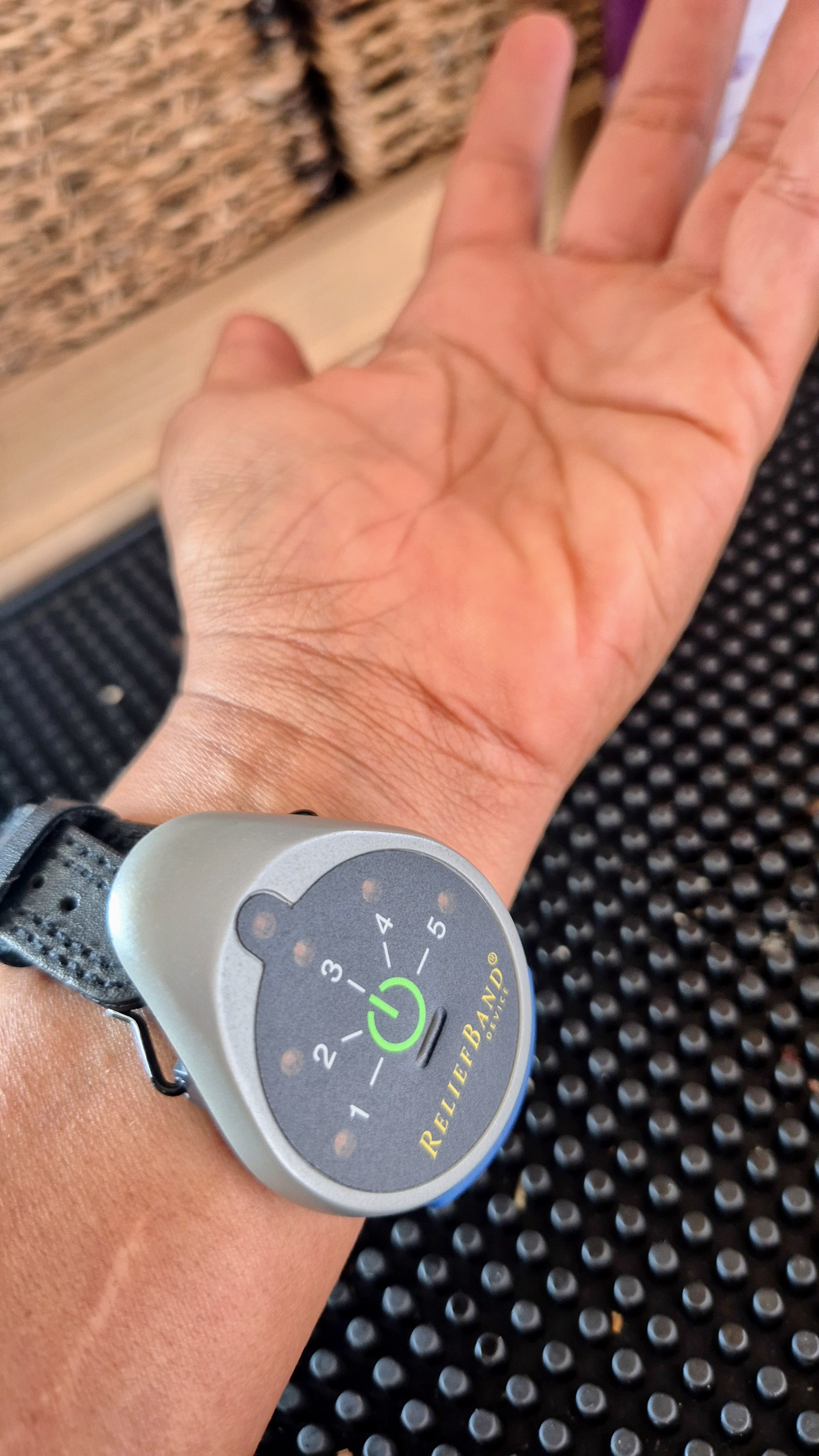
Newer wristbands using electrode stimulation of the P6 are increasingly popular. These bands stimulate the P6 with a mild electrical signal via electrode against the skin, similar to a Tens device. Like a tens device, there is a tiny pin prickle on the skin that intensifies at higher settings. The Relief Band pictured above, was highly effective. The face of the device shows a dial of ‘1’ through ‘5’, with ‘5’ being the strongest signal you can choose.
The unit emits a constant flow of signal so the vagus nerve is stimulated the entire time you wear it. Pro: you have constant feedback and feel like ‘surely it is doing something’. Con: you can rely on that feeling of constant input instead of re-training your brain. It was extremely upsetting when the battery ran out. To go from a steady stream of micro zaps to no sensation was tough. It made me realize there has to be another option besides constant stimulation.
Rating: 9/10 for ease of wearing and effectiveness.
Anti-Nausea Wristband
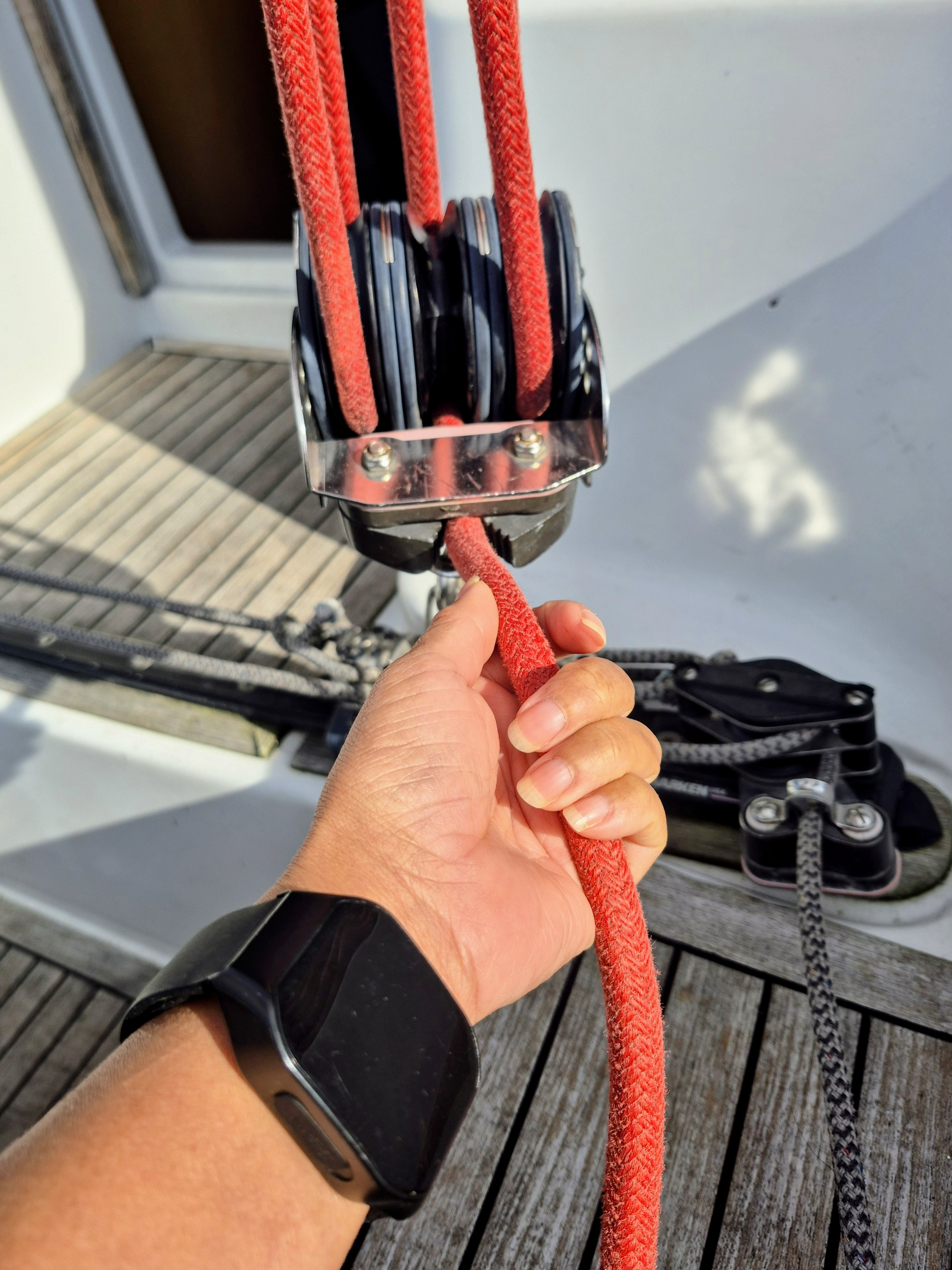
The Anti-Nausea Wristband pictured is similar to the Relief Band above. It is different as it sends an electric pulse to the vagus nerve intermittently, not a constant stream of stimuli. I recommend starting out at a strong setting. Back off the setting as your body gets used to the motion of the ocean.
Pro: This is the best option for a sustainable, long use, easy to use, no-drug remedy at sea. Con: the band was a little big for me. It is a one-size fits all device with 9 holes you can adjust to fit your wrist. The 9th and last hole was the best one for my wrist. The makers might consider making the unit slightly smaller for a woman or child’s wrist, the current sizing looks ideal for most men.
Rating: 10/10 for best long-term, easy to use solution.
A similar option I tried was the Emeterm wristband. It is smaller and lower profile, which fits a woman or child’s wrist better. It comes in a variety of colors and an option to accommodate the apple watch on the same band.
Conclusion
There are numerous drug, over-the-counter medicines, and wearable devices for combatting sea-sickness. Consider how long the voyage will be and the conditions ahead. Don’t let seasickness hold you back. Experiment, prepare, and you’ll find your sea legs. Time on the water is the best long term cure for new sailors.
See our courses page or get in touch for advice on finding RYA schools near you.

